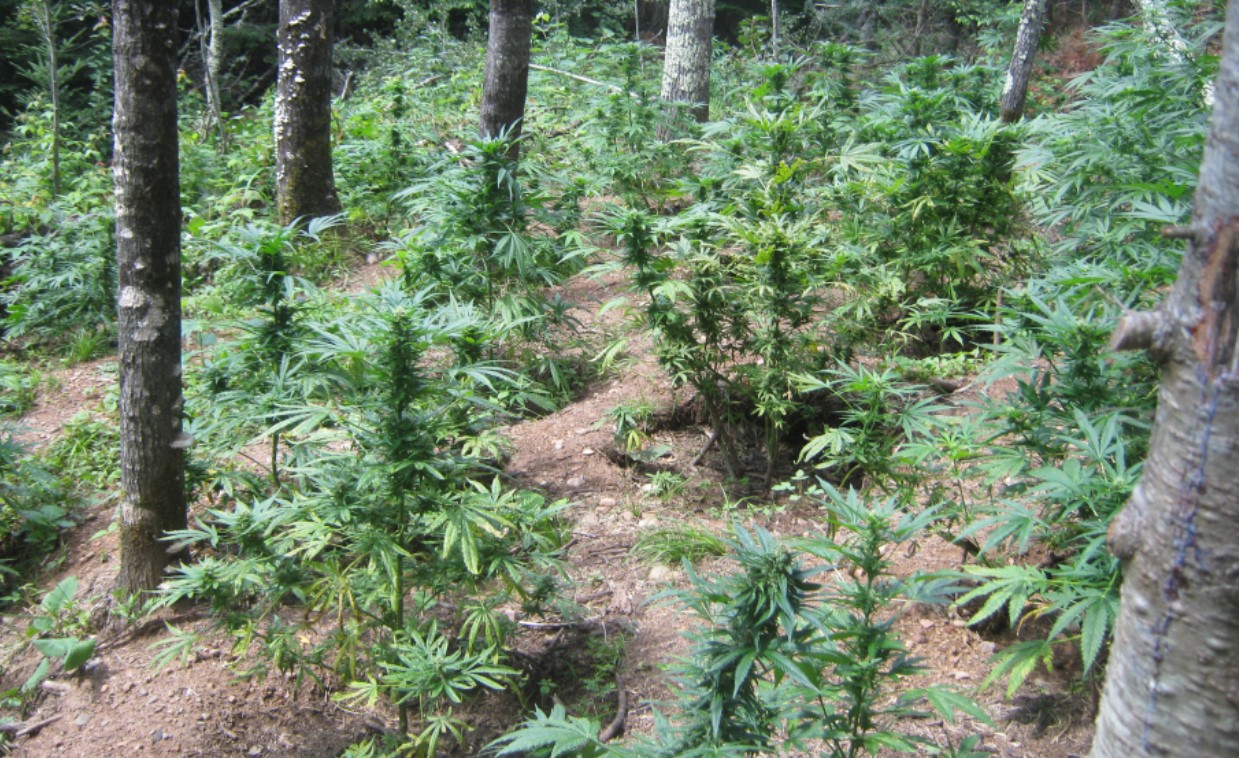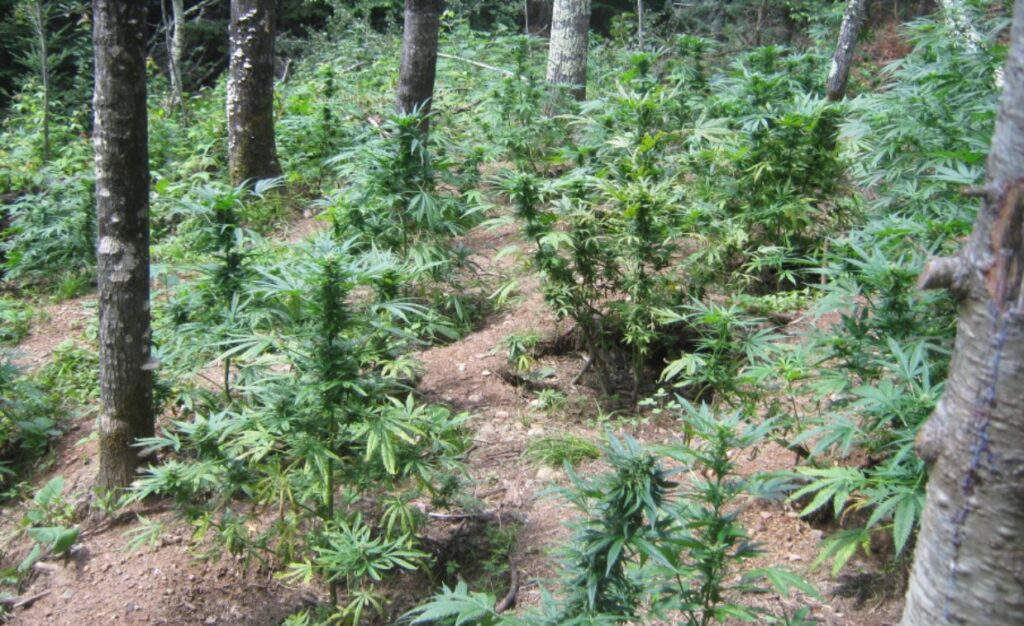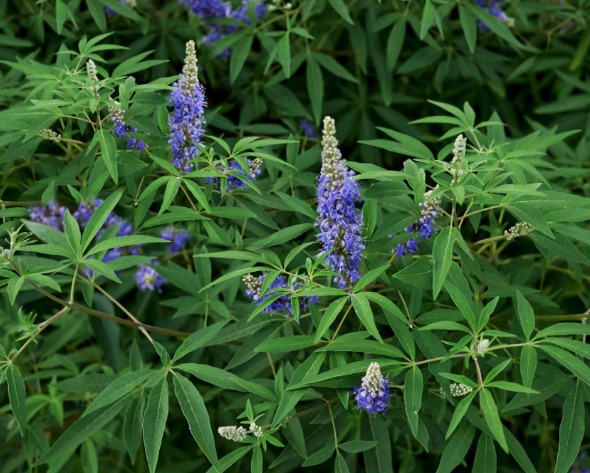Many aspiring cannabis growers face obstacles when it comes to finding suitable locations for cultivation. Whether it’s due to limited space, nosy neighbors, or strict regulations, growing cannabis on one’s own property is not always a feasible option. In such cases, growing weed in the woods presents itself as a viable alternative. This method allows growers to cultivate cannabis in a safer, more discreet environment. In this comprehensive guide, we will explore the pros and cons of growing cannabis in the woods, as well as provide valuable insights on how to successfully execute this stealthy growing technique.
Growing Weed in the Woods: A Stealthy Approach
Guerilla growing, also known as outdoor clandestine cultivation, involves cultivating cannabis on public or private land, often in wildlife sanctuaries or remote wooded areas. The main objective of guerilla growing is to maintain a high level of discretion throughout the cultivation process. Growing cannabis in the woods offers several advantages over other cultivation methods:
Pros of Growing weed in the Woods
- Lower Cost of Entry: Unlike indoor or greenhouse cultivation, growing cannabis in the woods does not require significant investments or capital. This makes it a more accessible option for individuals with limited financial resources.
- Increased Security: The remote nature of wooded areas makes it difficult for others to identify and claim ownership of the cultivation site. In the case of legal defense, proving ownership becomes challenging, providing an additional layer of security for growers.
- Multiple Growing Spots: Guerilla growers have the flexibility to establish multiple cultivation sites in different areas. This not only increases the potential yield but also minimizes the risk of losing the entire harvest at once due to theft or law enforcement intervention.
- Eco-Friendly Approach: Growing cannabis in the woods allows for organic cultivation methods, reducing the reliance on synthetic pesticides and fertilizers. This environmentally conscious approach aligns with the growing demand for sustainable cannabis production.
Cons of Growing weed in the Woods
While the benefits of growing weed in the woods are enticing, it is essential to consider the risks and challenges associated with this cultivation method:
- Risk of Loss: There is always a risk of losing the entire harvest due to theft, law enforcement intervention, animal interference, or adverse weather conditions. Growers must be prepared to accept these risks and take necessary precautions to minimize their impact.
- Limited Accessibility: Maintaining a hidden garden in the woods can be inconvenient and potentially unsafe. Infrequent visits to the cultivation site may hinder crucial tasks such as pruning and watering, ultimately affecting the overall quality and yield of the cannabis plants.
- Potential Environmental Impact: Nutrient runoff from guerilla growing sites can pose a danger to local ecosystems. The use of pesticides or inorganic nutrients can contaminate downstream water sources, endangering other living organisms. It is crucial to prioritize eco-friendly practices when cultivating cannabis in the woods.
Choosing the Right Strain for Growing Weed in the Woods
Selecting the appropriate cannabis strain is crucial for successfully growing weed in the woods. Consider the following factors when choosing a strain:
- Stable Immunity to Outdoor Conditions: Opt for strains that have demonstrated resilience to outdoor environmental factors such as temperature fluctuations, humidity, and pests.
- Resistance to Mold and Moist Conditions: Outdoor cultivation exposes plants to varying levels of moisture. Choose strains that have proven resistance to mold and can withstand damp conditions.
- Pest Resistance: Outdoor environments are teeming with pests that can damage cannabis plants. Look for strains with natural pest resistance to reduce the risk of infestations.
- Irrigation and Watering Tolerance: Guerilla growers may not have regular access to their cultivation sites. Therefore, it is advisable to choose strains that can tolerate longer periods without watering or require minimal irrigation.
- Yields: Consider the potential yield of the strain, as this will impact the overall productivity of your guerilla grow.
- Flowering Times: Take into account the typical flowering times of the strain and ensure they align with the climate and growing season of your region.
- Terpene Content: If discretion is a top priority, consider strains with low odor profiles. Some strains, such as “Ducksfoot,” have unique leaf structures that make them less recognizable as cannabis plants.
When selecting strains to grow weed in the woods, it is advisable to research reputable seed banks, consult online forums, and seek advice from experienced growers with knowledge of stealth cultivation.
Creating a Discreet Grow Environment
Disguising your cannabis garden is essential to maintain the stealthiness of your guerilla grow. Here are some strategies to help camouflage your plants and minimize their visibility:
- Hide Plants from View: Carefully assess your grow space from various angles to ensure plants are not visible from neighboring properties, roads, or other public areas. This will help prevent unwanted attention or potential theft.
- Camouflage Techniques: Employ various camouflage techniques to make your plants blend seamlessly into their surroundings. Consider using natural foliage, such as adding bright flowers nearby or planting cannabis alongside other bushes, to divert attention and create the illusion of a regular garden.
- Alter Plant Shape: Pruning and bending techniques can help alter the shape of your plants, making them appear less like typical cannabis plants. By encouraging bushier growth patterns and reducing the typical Christmas tree shape, you can further disguise your guerilla garden.
- Companion Planting: Planting companion plants with strong scents can help mask the odor of cannabis. Consider aromatic herbs like mint, rosemary, lavender, or lemongrass to create a pleasant fragrance around your grow area.
- Container Cultivation: Growing cannabis in containers allows for greater mobility and flexibility. This method enables you to easily move plants to different locations within the woods, making it harder for others to detect your cultivation site.
- Drown Out the Smell: Planting fragrant flowers or aromatic plants near your cannabis garden can help mask the distinct odor of cannabis plants. Choose flowers or plants that bloom around the same time as cannabis to divert attention from the smell.
Remember, the key to a successful stealth grow is to create an environment that closely resembles natural surroundings while minimizing any signs of cannabis cultivation.
Securing Your Guerilla Garden
Maintaining the secrecy and security of your guerilla garden is of utmost importance. Here are some essential tips to protect your plants and minimize the risk of theft or detection:
Choose a Remote Location:
Select a grow spot that is far away from frequently traversed paths or hiking trails. Avoid leaving any visible tracks or marks that could lead others to your cultivation site.
Test the Spot:
To gauge the level of traffic in a potential grow spot, leave small amounts of money in visible locations and return after a week or two to see if they have been disturbed. If the money remains untouched, it suggests the area is less frequented by people.
Stay Vigilant:
Be aware of anyone showing interest in your property or spending excessive time near your grow area. Even seemingly innocent observers could pose a threat by reporting your activities or potentially stealing your plants.
Minimize Plant Visibility:
Ensure your plants are not visible from any vantage points outside your property. Use natural foliage, structures, or other obstructions to shield your garden from prying eyes.
Smell Management:
Take precautions to control the odor emitted by your plants. Choose low-odor strains or implement scent-masking techniques using fragrant companion plants to reduce the risk of detection.
Regular Maintenance:
Maintain a regular visitation schedule to tend to your plants. Pruning, watering, and inspecting for pests or nutrient deficiencies should be part of your routine. However, it is essential to strike a balance between regular care and minimizing your presence to avoid drawing attention.
Disguising Your Visits:
When visiting your guerilla garden, ensure you have a plausible alibi to explain your presence. Engaging in activities such as hiking, bird watching, or mushroom picking can provide a legitimate cover story if encountered by others.
Cleanliness and Personal Hygiene:
Resin and odor can cling to your body and clothing while working with cannabis plants. Carry clean clothes in a sealed plastic bag to change into after tending to your garden. Use hand sanitizer or rubbing alcohol to remove any resin or “finger hash” from your hands and equipment.
By implementing these security measures, you can significantly reduce the risk of theft, detection, or unwanted attention, ensuring the safety and secrecy of your guerilla grow.
Maximizing Plant Health in the Wild
While stealth is a priority growing weed in the woods, it is equally important to provide optimal conditions for your cannabis plants to thrive. Consider the following factors to maximize plant health:
- Easy Accessibility: Choose a grow spot that allows for convenient access. Regular visits to tend to your plants, provide water, and monitor their progress are crucial for ensuring healthy growth.
- Water Source: Ensure your chosen location has a nearby water source, such as a stream or groundwater. Alternatively, consider burying a rainwater container in the ground nearby to collect and store water for irrigation purposes.
- Sunlight Exposure: Select a spot that receives at least 8 hours of direct sunlight per day. Sufficient sunlight is essential for robust vegetative growth and the production of high-quality buds.
- Air Circulation: A gentle breeze is beneficial for outdoor cannabis plants as it promotes airflow and prevents the buildup of heat and humidity. Avoid areas with stagnant air to minimize the risk of mold, mildew, and pest infestations.
- Temperature Considerations: Take into account the temperature patterns in your region. If extreme heat or cold poses a threat, consider shading your plants during the hottest part of the day or selecting strains that are more resilient to adverse weather conditions.
- Soil Preparation: While the natural soil in wooded areas may be suitable, providing your own soil mixture can offer better control over nutrient availability and water retention. Consider using a balanced, high-nutrient soil mix or incorporating organic materials such as compost and coconut fiber.
- 7. Nutrient Supplementation:
Cannabis plants demand a diverse array of nutrients across their growth cycle. While quality soil can offer a baseline of essential elements, outdoor cultivators have various nutrient supplementation options to enhance plant health and maximize bud production.
Set-and-Forget Slow Release Nutrients:
For a low-maintenance approach, consider utilizing slow-release nutrients. These formulations provide a continuous, gradual release of essential elements over an extended period. This method is particularly beneficial for growers seeking minimal intervention throughout the growing season.
Mix Your Own Super Soil:
Craft your own nutrient-rich super soil by blending organic materials that release nutrients slowly. This DIY super soil approach allows for a more customized nutrient profile tailored to your cannabis plants’ specific needs. It’s a popular choice among outdoor growers who prefer a hands-on, sustainable cultivation method.
Weekly Nutrient Feeding:
Another approach involves a weekly nutrient feeding regimen, adjusting nutrient levels based on the growth stage. This method offers flexibility and precision in nutrient management, allowing growers to respond to the dynamic needs of their plants. Refer to the provided TDS and EC chart for guidance on nutrient levels at each week of growth.
Feeding Chart for Growing Weed in the Woods
| Week of Growth | TDS Levels (ppm) | EC Levels (mS/cm) | pH of Nutrient Solution |
|---|---|---|---|
| 1 Vegetative | 100-250 | 0.2-0.5 | 5.8-6.5 |
| 2 Vegetative | 250-350 | 0.5-0.7 | 5.8-6.5 |
| 3 Vegetative | 350-500 | 0.7-1.0 | 5.8-6.5 |
| 4 Vegetative | 500-700 | 1.0-1.4 | 5.8-6.5 |
| 5 (early flowering) | 700-900 | 1.4-1.8 | 5.8-6.5 |
| 6 (early flowering) | 800-1000 | 1.6-2.0 | 5.8-6.5 |
| 7 (mid flowering) | 900-1100 | 1.8-2.2 | 5.8-6.5 |
| 8 (mid flowering) | 1000-1200 | 2.0-2.4 | 5.8-6.5 |
| 9 (late flowering) | 1100-1300 | 2.2-2.6 | 5.8-6.5 |
| 10 (late flowering) | 1200-1400 | 2.4-2.8 | 5.8-6.5 |
| 11 (late flowering) | 1300-1500 | 2.6-3.0 | 5.8-6.5 |
| 12 (ripening/harvest) | <1000 | <2.0 | 5.8-6.5 |
Regardless of the chosen nutrient strategy, meticulous care and attention to plant response are crucial. Regular monitoring and adjustments ensure that your outdoor cannabis garden receives the right balance of nutrients for vigorous growth and optimal bud development. As you explore these various approaches, keep in mind the importance of maintaining a suitable pH range, as indicated in the accompanying chart, to support nutrient uptake and overall plant health.
By carefully considering these factors and providing the necessary care, you can support the growth and development of healthy cannabis plants in your guerilla garden.
Conclusion
Growing cannabis in the woods presents a stealthy and cost-effective alternative for aspiring cultivators. While guerilla growing comes with its own set of challenges, proper planning, strain selection, and security measures can help ensure a successful harvest. By embracing the unique advantages of outdoor cultivation and implementing the strategies outlined in this guide, you can enjoy the rewards of growing cannabis in a discreet and natural setting. Remember to always prioritize the legalities and regulations of your jurisdiction and respect the environment throughout your guerilla growing journey. Happy growing!






